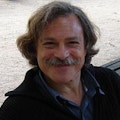Paul Chaikin, Ph.D.
New York University
Paul Chaikin received a physics B.S. from California Institute of Technology (1966) and a physics Ph.D. from the University of Pennsylvania (1971) with a thesis on Kondo superconductors. He joined the physics faculty at the University of California, Los Angeles in 1972 and studied thermopower, charge and spin density waves, and high magnetic field phenomena mostly in organic superconductors. The lore of actually seeing the microscopics of a system led him into soft matter, where he helped develop techniques to measure elasticity and motion, and understand interparticle interactions. Both hard and soft matter interests continued after joining the faculty at the University of Pennsylvania (1983), the research staff at Exxon Research (1983) and the faculty at Princeton University (1988). His interests in geometry and topology led to founding contributions to nanolithography with diblock copolymers, and studies of defect motion and annealing. Probably his most well-known contribution is showing that ellipsoids (e.g., M&M’s) pack more densely than spheres and helping to explain why. In 2005, he helped found the Center for Soft Matter Research and joined the faculty at New York University (NYU). His more recent research centers on photonic non-crystals, artificial active matter, colloids, self-assembly, self-replication, DNA nanotechnology, topological defects on curved surfaces and quantifying order in nonequilibrium phenomena.
Chaikin is a Julius Silver, Roslyn S. Silver, and Enid Silver Winslow Professor of Physics at NYU, Henry DeWolf Smyth Prof. of Physics, Emeritus at Princeton, a member of the National Academy of Science and a Fellow of the American Academy of Arts and Sciences, the American Physical Society and the Institute of Physics (London). He was an A. P. Sloan Foundation Fellow and a John Simon Guggenheim Fellow and received the 2018 Oliver E. Buckley Condensed Matter Prize from the American Physical Society. With Tom Lubensky, he co-authored the text Principles of Condensed Matter Physics.